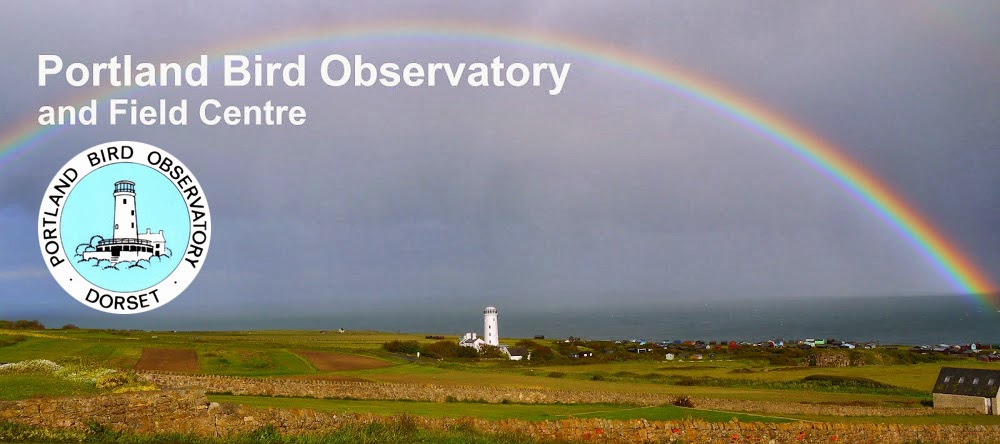What potential there was today ended up well and truly washed away by a morning of almost continual rain which was great for dropping waders at Ferrybridge but didn't permit any meaningful fieldwork on the land until the afternoon. Ferrybridge was buzzing with activity that included what must be a Portland record tally of 70 Redshank; 7 Whimbrel, 3 Knot and a Ruff were the best of the rest there. The Bill certainly wasn't busy with new arrivals but a fair bit of late legwork eventually came up with 10 Whinchats, 3 Pied Flycatchers, 2 Redshank, 2 Tree Pipits and singles of Redstart, Reed Warbler and Lesser Whitethroat amongst others. Most of the day's Balearic Shearwaters were moving rather than lingering, with a total of 17 through off the Bill; 52 Dunlin and 2 each of Arctic Skua and Great Skua also passed through there.
Overnight moth-trapping was not as productive as had been hoped, with singles of Convolvulus Hawk-moth at the Obs and West Grove Terrace, and a White-speck at the Obs the best of the immigrants. Immigrants by day included a good spread of Hummingbird Hawk-moths and several Vestals disturbed from fields at the Bill.
Redshanks, Ruff and Pied Flycatcher - Ferrybridge and Southwell, 23rd August 2015 © Pete Saunders (Redshanks and Pied Flycatcher) and Debby Saunders (Ruff)
Also today we received provisional details back from Jannick Hansen in Denmark on a colour-ringed Dunlin that was present earlier this month at Ferrybridge, where it was first spotted by Pete Coe on 8th August and thereafter lingered for at least another week:


...it turns out that the bird was ringed on 9th July at Zackenberg, north-east Greenland, and is the first resighting of a bird from this research site. From our reading of The Migration Atlas it seems that this bird will be an arctica Dunlin - a form that has a population of only some 15000 individuals and occurs in Britain only briefly on passage in spring and autumn to and from winter quarters in West Africa. We do still find this sort of stuff pretty staggering: Ferrybridge is hardly big league in the wader stakes, yet amongst the things dropping in there to stage during August there'll just as likely be a Dunlin that a month before was breeding on the edge of Greenland or, as we discovered from a colour-ring sighting last year, a Ringed Plover from a population in high arctic Canada. On the map below the yellow line connects Ferrybridge with Zackenberg, whilst the red line shows the connection with Bylot Island - the Ringed Plover's breeding site - in Canada.




















































